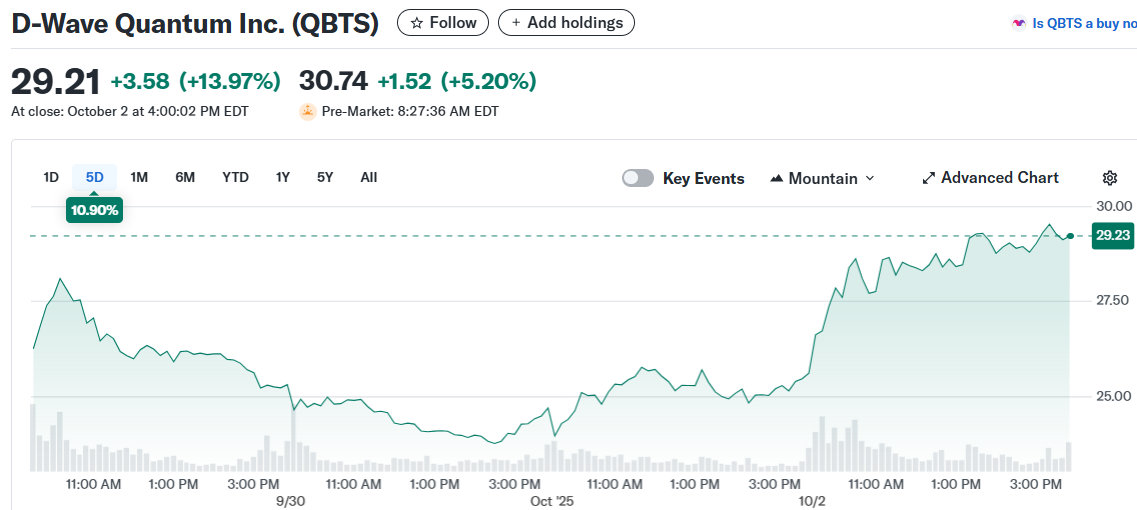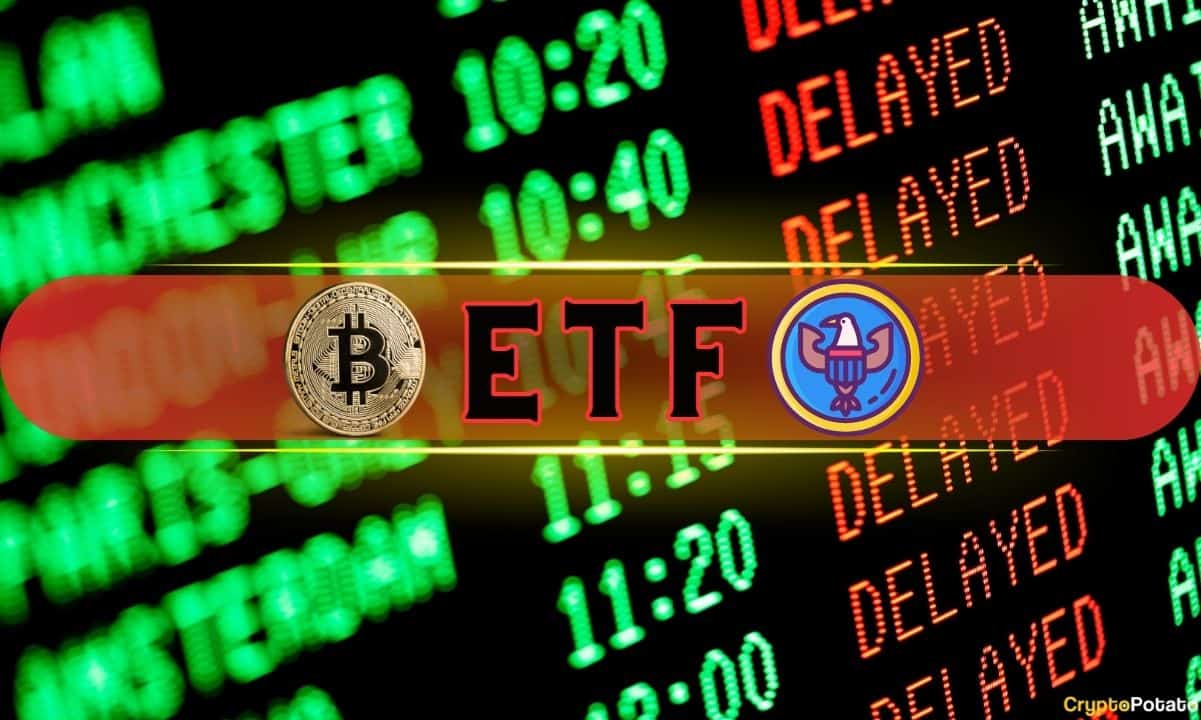D-Wave Quantum (QBTS) Stock: Police Partnership Powers Rally to All-Time Highs
TLDR
- D-Wave Quantum (QBTS) stock climbed to an all-time high of $29.23 on October 2, 2025, extending to $30.35 in pre-market hours.
- A $400 million equity offering in July 2025 brought the company’s cash reserves to $819 million by Q2 2025.
- The stock delivered a 3,058% one-year return with 120.2% revenue growth over the past twelve months.
- D-Wave’s quantum technology helped North Wales Police solve optimization problems in 4 minutes instead of 4 months, reducing response times by 50%.
- Ford Otosan achieved an 85% reduction in vehicle scheduling time using D-Wave’s hybrid quantum computing solutions.
D-Wave Quantum stock set an all-time high at $29.23 on October 2, 2025. The quantum computing company saw shares gain 14% during that session.
 D-Wave Quantum Inc. (QBTS)
D-Wave Quantum Inc. (QBTS)
Pre-market trading on October 3 showed continued momentum. QBTS reached $30.35 at 6:58 AM EDT, adding another 3.87%.
This surge caps a remarkable three-week run. Shares traded around $18 in mid-September, making this a 60% gain in less than a month.
The company’s market capitalization now sits near $10 billion. One-year returns have reached 3,058% as quantum computing gains traction.
Revenue grew 120.2% over the last twelve months. Institutional investors now hold 42.5% of outstanding shares.
$819 Million Cash Reserve Strengthens Position
D-Wave closed a $400 million at-the-market equity offering in July 2025. This capital raise reshaped the company’s financial outlook.
The infusion brought D-Wave’s cash balance to $819 million by the end of Q2 2025. Few publicly traded quantum computing companies can match this balance sheet strength.
Management earmarked funds for capital expenditures and research initiatives. Projects include cryogenic packaging development with NASA’s Jet Propulsion Laboratory.
The company is pursuing 100,000-qubit system development. This cash cushion removes immediate pressure to reach profitability.
Zacks Investment Research pointed to this financial flexibility as key. The capital helps D-Wave navigate the irregular sales cycles common in quantum hardware.
McGuire Investment Group boosted its stake by over 1,200%. Investors view the cash reserves as fuel for long-term growth.
Emergency Services and Manufacturing See Results
D-Wave partnered with North Wales Police in a project announced September 30, 2025. The collaboration tackled vehicle deployment optimization for emergency response.
D-Wave’s hybrid quantum solvers completed the optimization in 4 minutes. Classical computing methods would have required an estimated 4 months.
The deployment cut average incident response times by 50%. This UK government-backed project demonstrates quantum computing’s practical value.
Ford Otosan implemented D-Wave’s hybrid quantum scheduler with impressive outcomes. The automotive manufacturer slashed vehicle scheduling time by 85%.
These real-world applications validate the quantum annealing approach. A July 2025 survey revealed 81% of business leaders think classical computing has reached optimization limits.
About 27% of respondents expect quantum solutions to generate over $5 million in first-year returns. McKinsey forecasts quantum computing revenue will jump from $4 billion in 2024 to $72 billion by 2035.
Financial Performance and Analyst Views
D-Wave’s Q2 fiscal 2025 results showed a loss of -$0.08 per share. This missed analyst expectations of -$0.05 per share.
Revenue exceeded forecasts at $3.1 million compared to $2.59 million expected. The company reported an 83% increase in Asia Pacific bookings over twelve months.
Benchmark kept its Buy rating with a $20 price target on QBTS. Piper Sandler lifted its target to $22 from $13 while maintaining an Overweight rating.
The company operates with an 82.5% gross profit margin. D-Wave plans its first Qubits Japan 2025 conference in Tokyo.
InvestingPro data shows QBTS trading above Fair Value estimates. The stock’s performance reflects growing market confidence in quantum computing commercialization timelines.
The post D-Wave Quantum (QBTS) Stock: Police Partnership Powers Rally to All-Time Highs appeared first on CoinCentral.
You May Also Like

American Bitcoin’s $5B Nasdaq Debut Puts Trump-Backed Miner in Crypto Spotlight

Cashing In On University Patents Means Giving Up On Our Innovation Future
